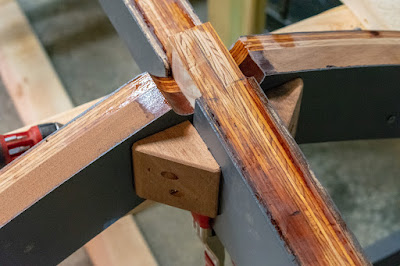 |
| I made this blocking out of leftover 2" thick mahogany. |
 |
| Dry-fitting the stem blocks. |
 |
| Dash inlay sanded for encapsulation coat #2. |
 |
| Areas marked off for sanding on stem & Frame # 5-1/2. |
 |
| Quick, if ugly, sanding on the frame for better epoxy adhesion. |
 |
| Quick, if ugly, sanding on the stem. |
 |
| Stem "glued and screwed" into place. |
 |
| Detail shot of blocking. |
 |
| Should be pretty sturdy. |
 |
| A little encapsulation on the transom. |
















